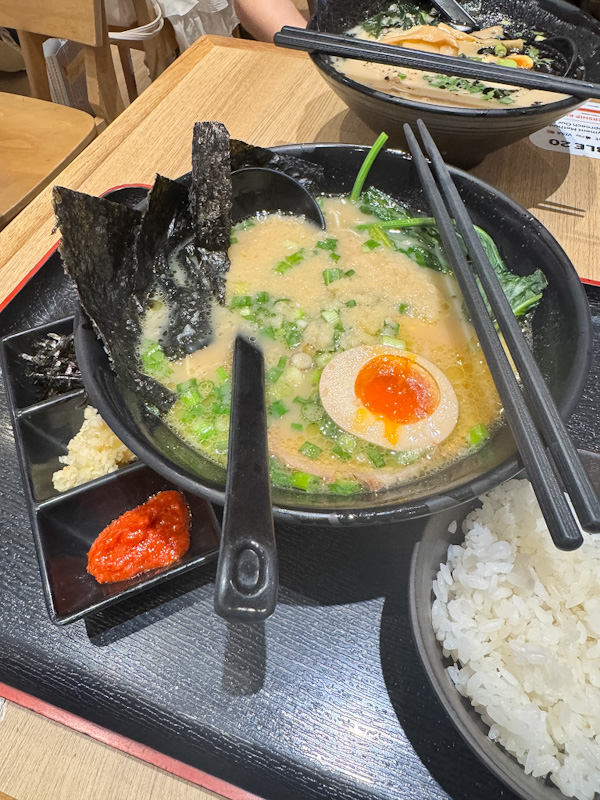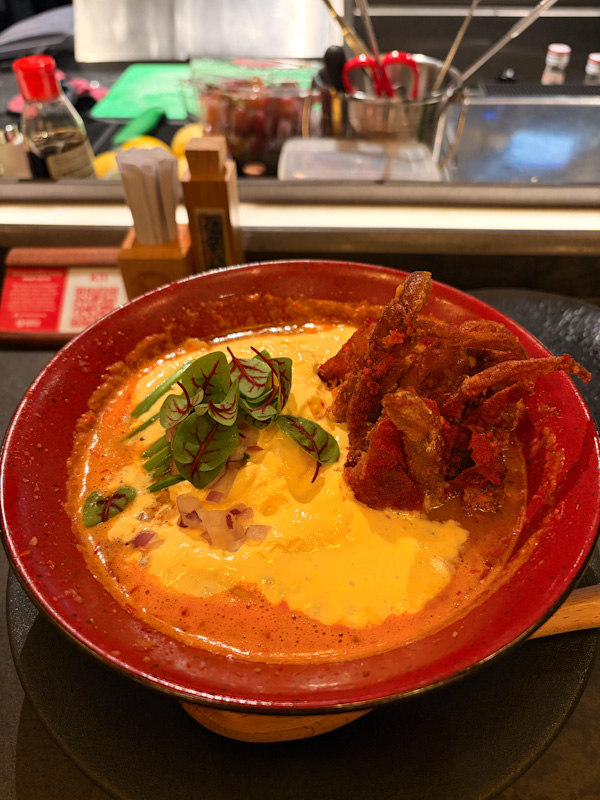WHAT WE ATE
- Showa Revival Ramen – 70/100, Kumamoto
- Ajisen Ramen – 75/100, Kumamoto
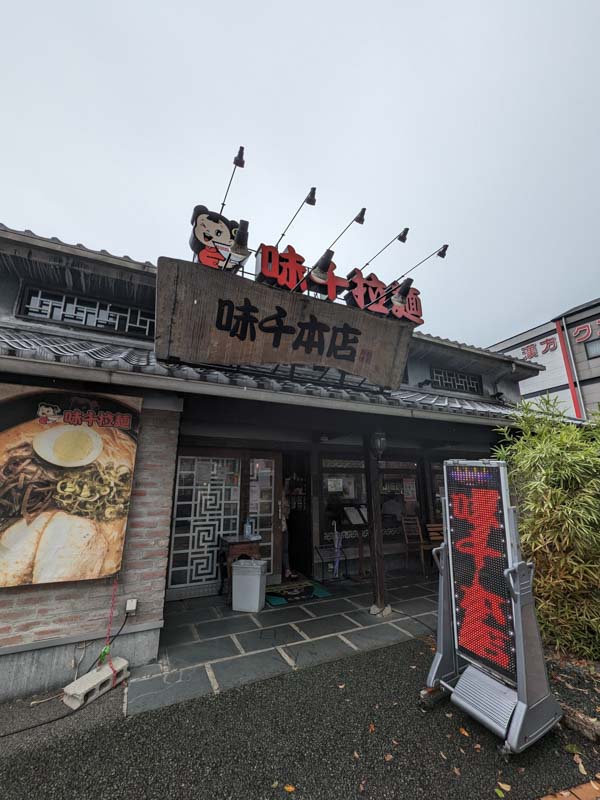
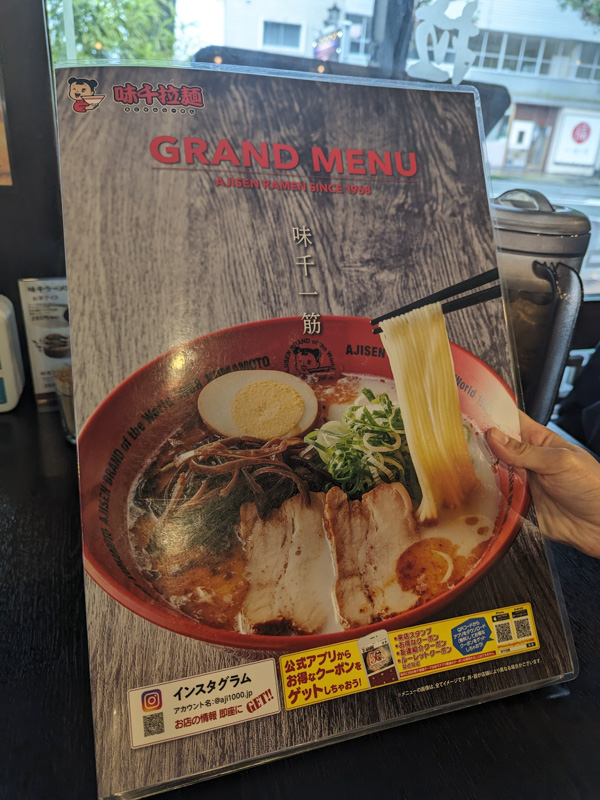



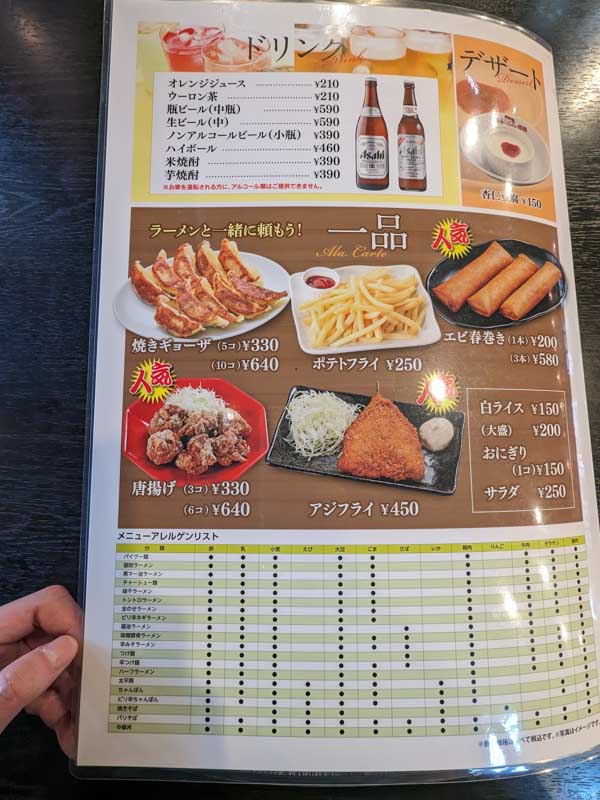

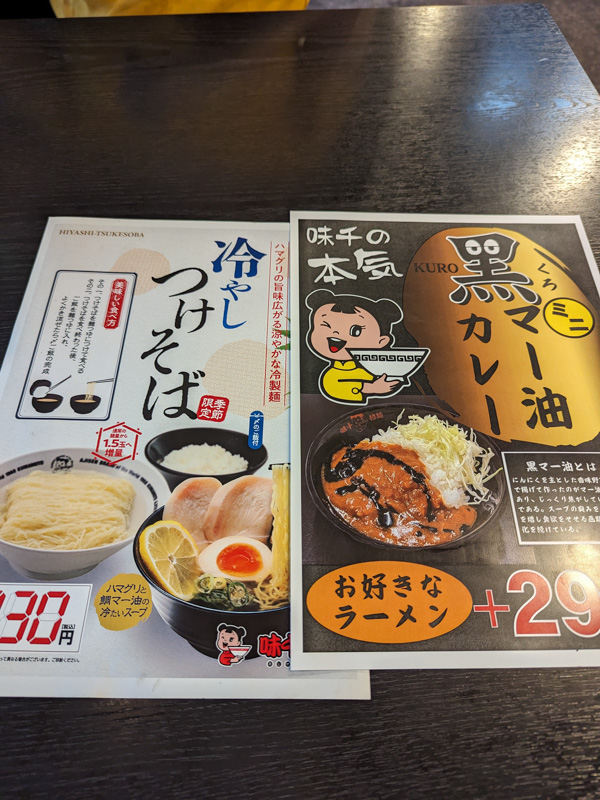
Established in Kumamoto, Japan, Ajisen Ramen has grown to become a prominent international ramen chain, captivating diners with its delicious and authentic noodle dishes and its iconic branding with the Ajisen girl. There’s a rich culinary heritage dating back to its humble beginnings, where 3 friends created what is known as Kumamoto-style ramen today by modifying the then popular Kurume Ramen (The origination of Tonkotsu Ramen).

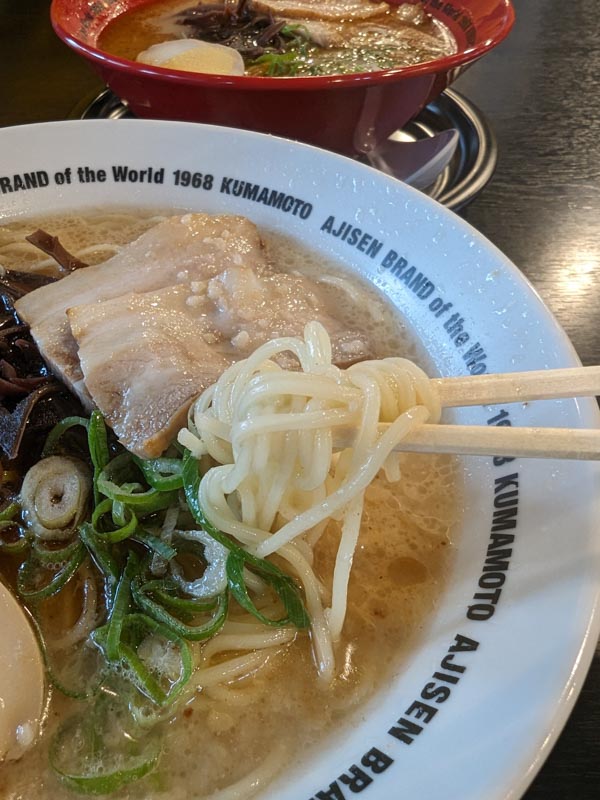
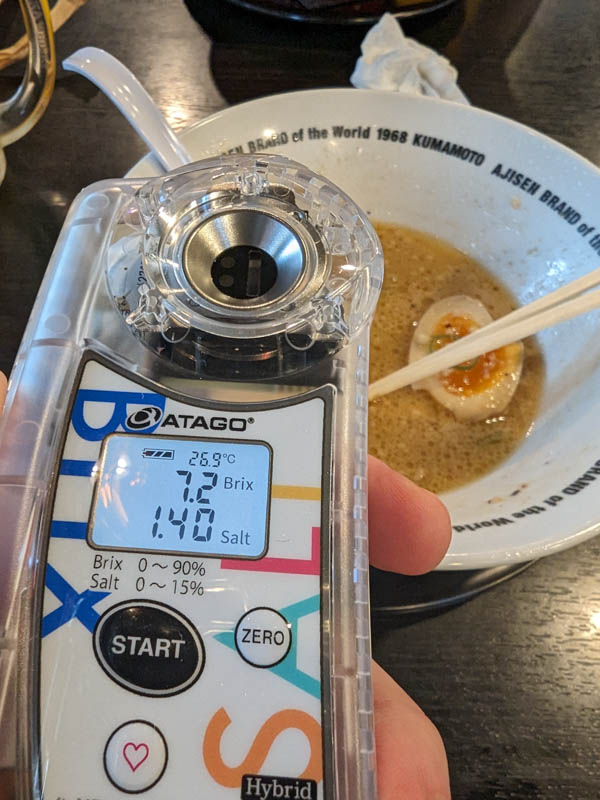
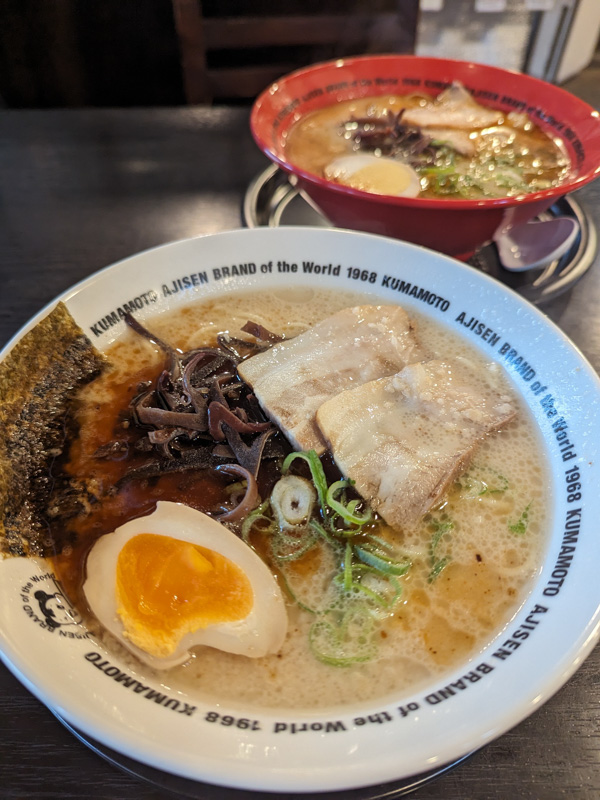
Showa Revival Ramen – 70/100
Noodles – 25/35
Having grown up with Ajisen in Singapore, I feel compelled to draw comparisons. The noodles are thinner than the medium-thin ones at the Singapore franchise. However, these noodles possess a delightful softness, chewiness, and a pleasantly springy texture. They resemble the qualities typically found in Shoyu ramen. In terms of taste, they were average, lacking a distinctive flavor but also devoid of any noticeable residual kansui taste.
Soup – 30/35
The first thing that greets your senses is the enticing aroma of sesame oil. It is followed by the delectable sweetness derived from the tonkotsu base and the savory notes of shoyu. Unlike some other ramen varieties, the sesame oil flavor in this bowl is well-balanced and not overpowering, harmonizing perfectly with the porky soup. Moreover, there are floating pork fat pieces that add a delightful texture to the soup.
Meat – 10/20
The thinly sliced chashu is relatively fatty and chewy as a result. While the marination is light, it adequately complements the soup. However, the texture of the meat could be improved to make it more tender.
Toppings – 5/10
In contrast to the traditional Kumamoto ramen, the marinated egg in Showa Revival Ramen features a lava-like yolk, similar to what you would find in tonkotsu or hakata ramen. The marination is quite good, retaining a satisfying taste. Additionally, the bowl is adorned with negi (green onions) and black fungus as additional toppings.

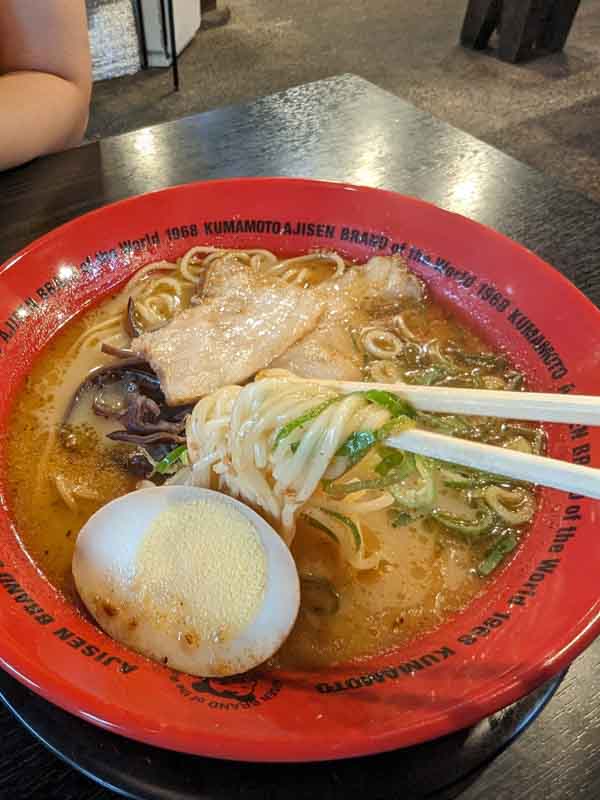
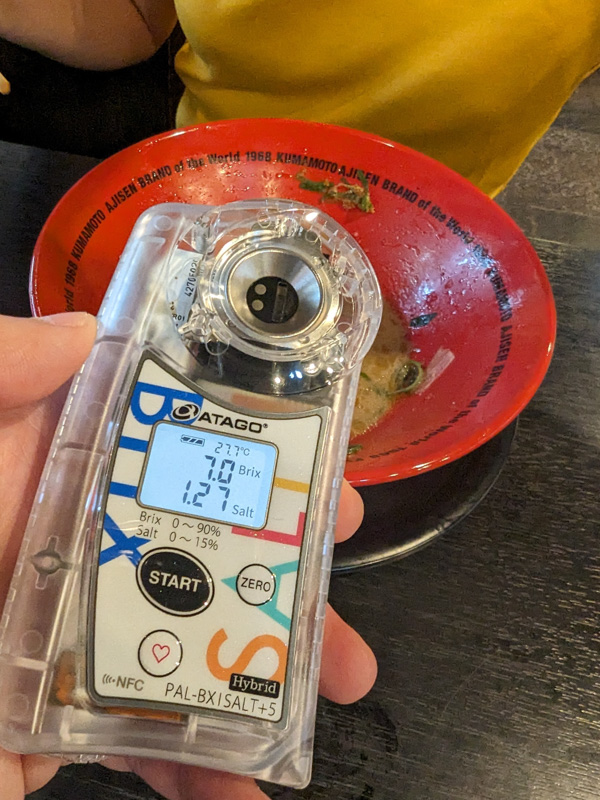


Ajisen Ramen – 75/100
Noodles – 25/35
The same thin noodles are used here. Delightful softness, chewiness, and a pleasantly springy texture. They resemble the qualities typically found in Shoyu ramen. In terms of taste, they were average, lacking a distinctive flavor but also devoid of any noticeable residual kansui taste.
Soup – 35/35
In this classic version, the flavors are significantly bolder and more pronounced in every aspect. The porkiness is heightened, and the sesame oil flavor is more prominent. However, despite the intensified flavors, the broth manages to feel lighter overall, leaving a refreshing and clean palate after each sip.
Meat – 10/20
Same chashu used here as well. The thinly sliced chashu is relatively fatty and chewy as a result. While the marination is light, it adequately complements the soup. However, the texture of the meat could be improved to make it more tender.
Toppings – 5/10
The toppings remain consistent, except for the marinated egg, which is now a fully cooked hard-boiled egg. The texture of the egg is firmer, and the marination appears to be slightly stronger as well.
DISCLAIMER
One man’s meat is another man’s poison.
Find out more about our palettes and how we evaluate our ramen here. 😉

